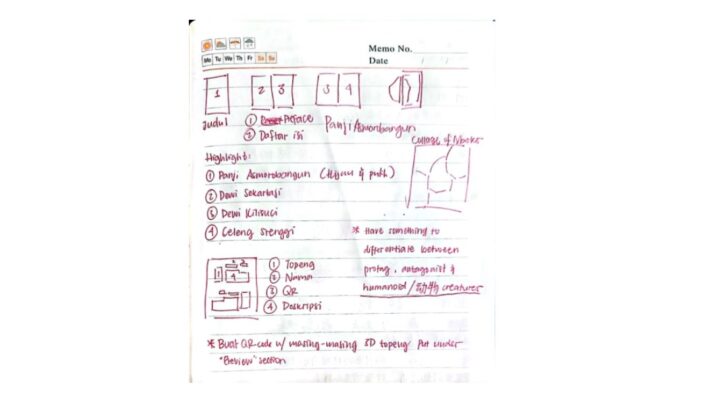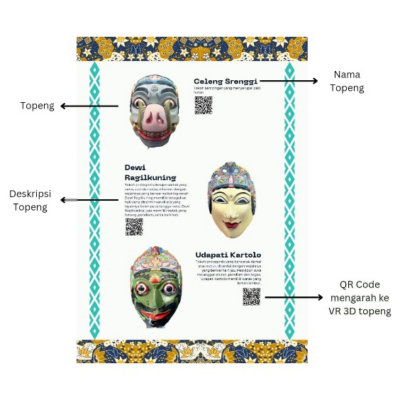Malang – Students of the PKM Team of the Chinese Literature Study Program succeeded in digitizing 74 Topeng Cerita Panji from Padepokan Asmorobangun, Pakisaji, Malang Regency, into a 3D Virtual Reality (VR) format. This project aims to introduce and preserve local culture, especially the art of Wayang Topeng Malangan so that it can be known more widely.
This program was motivated by the lack of information about the art of Topeng Malangan in Padepokan Asmorobangun, which is the center of Malang’s traditional mask art. In addition, although the demand for masks is quite high, even in foreign countries, the marketing of this product cannot be done online. Therefore, the Group 2 of PKM Team, which consists of: Shofie Shafa S. Z., Arjuna Satria D. B., Eirene Charista S., Gracia Amethyst C., Agniananda Adriani S., and Ressi Maulina Delijar S.S., M.Li. as the field supervisor, designed the Wayang Topeng Malangan Art Digitization project. This project involved the documentation of Padepokan Asmorobangun’s Topeng Panji Asmorobangun.
This PKM program uses the ADDIE method (Analyze, Design, Develop, Implement, Evaluate). The initial phase involved a survey and interview with the owner of the hermitage, Mr. Handoyo, to understand the constraints and main focus. From the survey, a collection of 74 Topeng Panji was found, some of which are also kept at the Singhasari Museum. The team also conducted direct observation of a Panji Naga Tahun performance coinciding with the commemoration of 1 Suro, to enrich insights on the function and use of masks in cultural rituals.

Picture 1. Rough Sketch of the Catalog Layout
In the design stage, the team drew up initial sketches of the catalog and determined a color palette that had philosophical meaning. The documentation of each mask was done manually using a handheld device, photographing each side to produce a quality 3D model. This process used PolyCam software, with each mask requiring around 200 frames to ensure optimal results. All documentation results are then uploaded to Google Drive and converted into QR codes integrated into the digital catalog.
The development stage focuses on two main products, namely the 3D VR model of the mask and the digital catalog. This digital catalog contains a photo of the mask, the name of the character, a brief description, and a QR code that directs users to the 3D VR model of the mask. Careful editing was done to ensure the final quality was high and worthy of publication.

Picture 2. Display and Explanation of Panji Asmorobangun Mask Catalog Layout
After the development stage, the team carried out implementation by testing the catalog and 3D VR model internally. This test also involved the Padepokan Asmorobangun before the product handover procession was carried out as the first step in dissemination. Evaluation continues to be carried out to ensure product quality and overcome obstacles that may arise in the future.
With the results of the service product in the form of a catalog and virtual reality 3D Topeng Panji Asmorobangun, it is hoped that it can strengthen the attractiveness of Padepokan Asmorobangun as a cultural center, expand access to information about Wayang Topeng Malangan, and support the preservation of traditional arts through digital technology. And can be the first step towards the development of a more modern, inclusive, and sustainable Topeng Panji Asmorobangun craft center.


